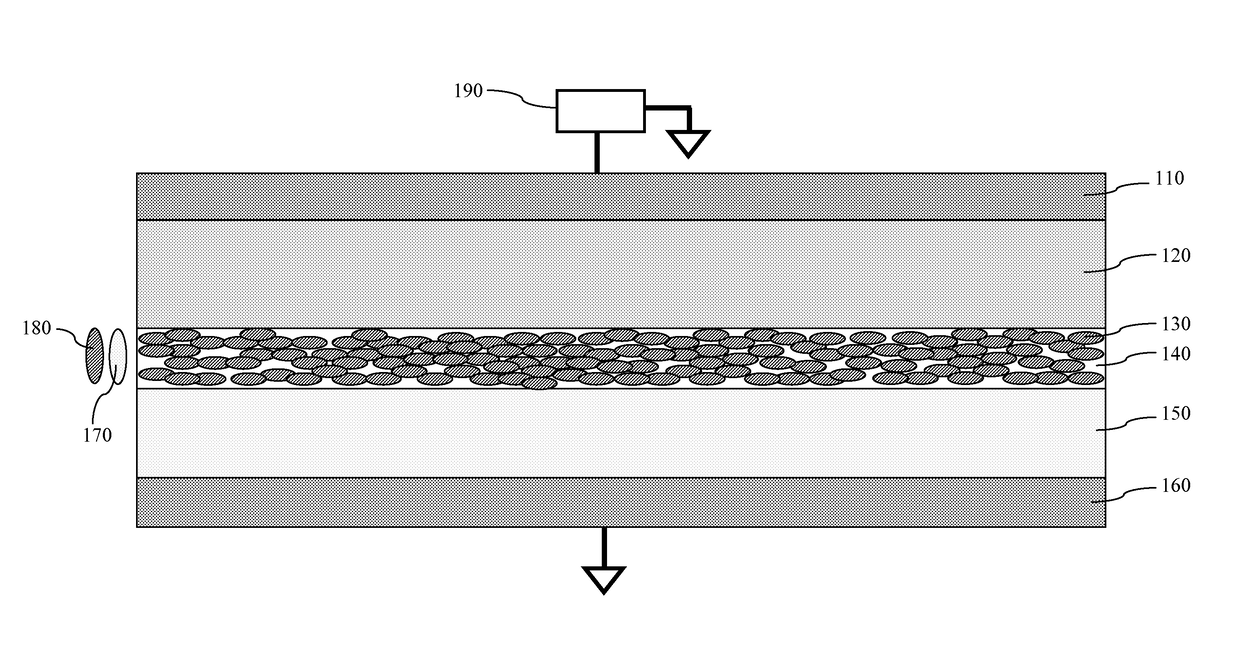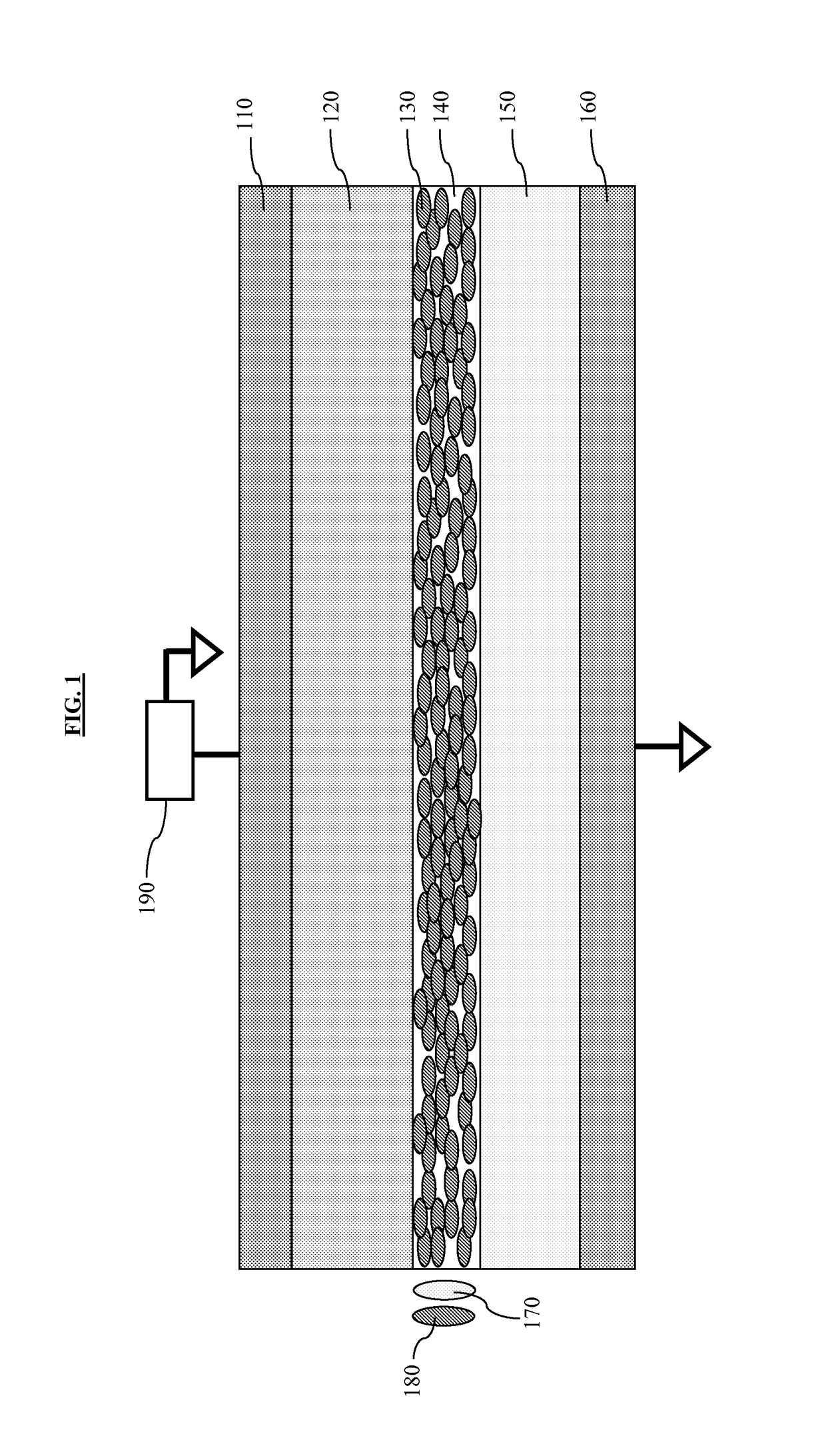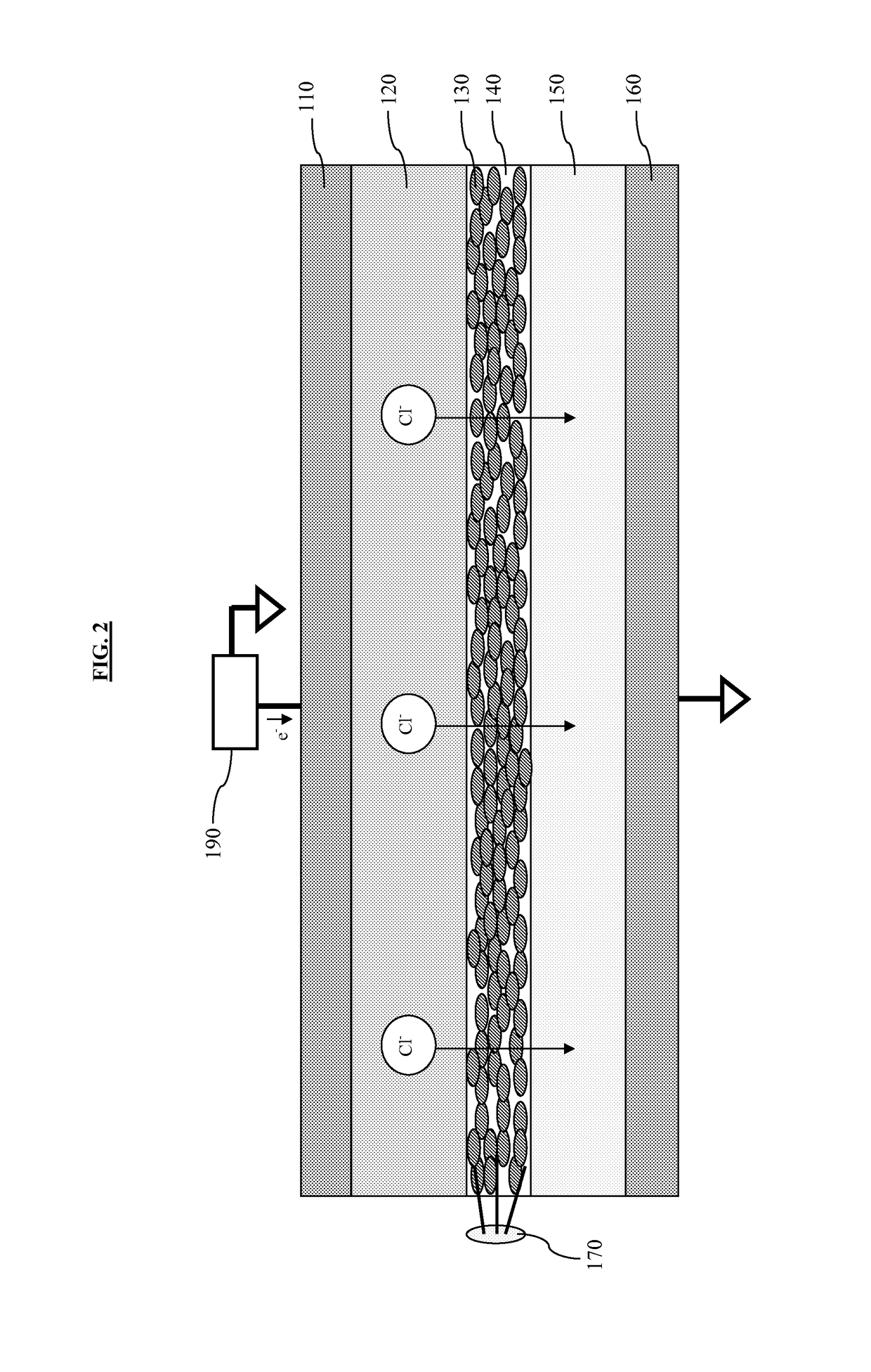System and method of generating electricity from the salinization of freshwater
a technology of freshwater and electricity generation, applied in the field of electricity generation, can solve the problems of limiting the rate of power generation and thus economic viability, limiting the speed of power generation, and reducing the efficiency of extraction, so as to reduce the impedance of the system, and reduce the effect of ion flux from saline to freshwater
- Summary
- Abstract
- Description
- Claims
- Application Information
AI Technical Summary
Benefits of technology
Problems solved by technology
Method used
Image
Examples
example 1
n of Channelrhodopsin
[0043]Channelrhodopsin was expressed by transfection with a channelrhodopsin plasmid in the JM109 strain of E. coli. The plasmid also encodes for a protein conferring kanamycin-resistance, and a green fluorescent protein. A biofilm was then created by inoculating the E. coli on a 25 mm diameter, 8.0 μm pore size, MF-Millipore Mixed Cellulose Ester Membranes filter sitting on LB agar with 50 μg / ml Kanamycin and 5 μM all-trans-retinal added. FIG. 4A is a schematic of biofilm growth on the filter membrane showing agar 495, membrane 440, and bacterial colony 430. The kanamycin selected for bacteria that were actively expressing the plasmid coding for channelrhodopsin.
[0044]After growth of the biofilm for 3 days, the expression of channelrhodopsin was assayed by the presence of the co-expressed green fluorescent protein (GFP) using fluorescence microscopy. A confluent, 100 μm thick biofilm with strong GFP fluorescence is demonstrated in FIG. 4B, which is a 2-photon i...
PUM
| Property | Measurement | Unit |
|---|---|---|
| diameter | aaaaa | aaaaa |
| diameter | aaaaa | aaaaa |
| thick | aaaaa | aaaaa |
Abstract
Description
Claims
Application Information
 Login to View More
Login to View More - R&D
- Intellectual Property
- Life Sciences
- Materials
- Tech Scout
- Unparalleled Data Quality
- Higher Quality Content
- 60% Fewer Hallucinations
Browse by: Latest US Patents, China's latest patents, Technical Efficacy Thesaurus, Application Domain, Technology Topic, Popular Technical Reports.
© 2025 PatSnap. All rights reserved.Legal|Privacy policy|Modern Slavery Act Transparency Statement|Sitemap|About US| Contact US: help@patsnap.com



